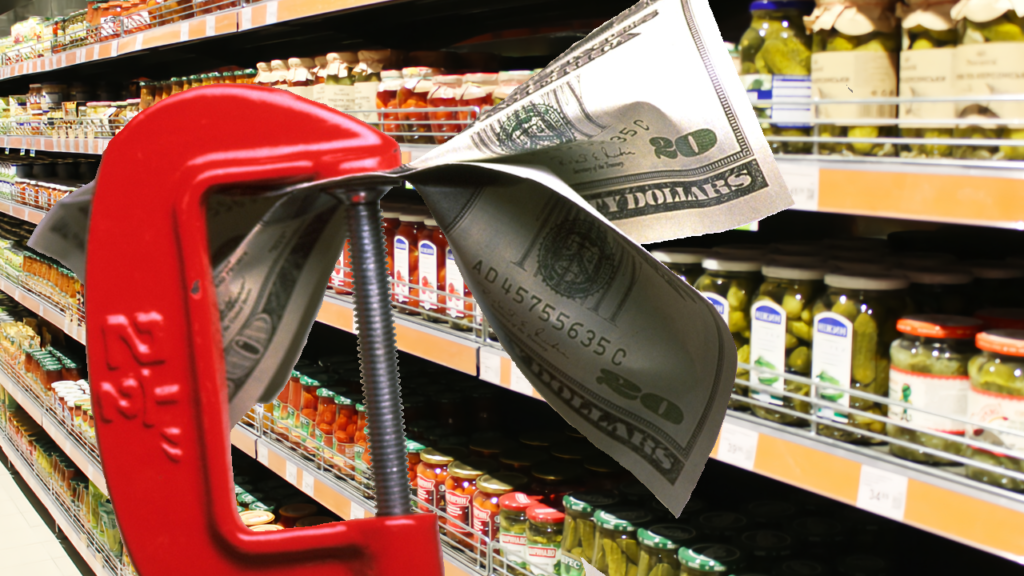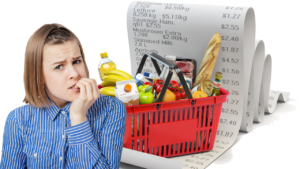Many of the critical problems facing Americans today, such as security, inflation, and geopolitical risk, are complex and stem from myriad drivers. Addressing these problems requires diverse business and policy choices. These choices should be based on valid information, analytics, and rational thinking — not political demagoguery.
During presidential election seasons, people understand that candidates use hyperbole and promises to excite their political base. If people not associated with the candidate’s political base do react to stump speeches, it’s generally with a shake of the head in disbelief. It was, therefore, unusual when Vice President Kamala Harris stirred up a hornet’s nest when she promised to go after “price gouging” and “excessive corporate profits,” especially in the food and grocery sector. Washington Post journalist Catherine Rampell asks, “So what level counts as ‘excessive,’ you might ask? TBD, but Harris will ban it. That’s the thing about price gouging: As has been said of hardcore pornography, you know it when you see it.”[1] Harris is a skilled politician. She knows that consumers — and voters — are feeling the pinch of food prices that are now over 25 percent higher than when she and President Joe Biden took office four years ago. She feels compelled to address the situation. Obviously, no sane person favors price gouging and only investors applaud excessive profits. But as Rampell writes, “It’s hard to exaggerate how bad this policy is. It is, in all but name, a sweeping set of government-enforced price controls across every industry, not only food. Supply and demand would no longer determine prices or profit levels.”
Industry Reacts
Harris insists that during her first 100 days in office she will make it “a top priority to bring down costs and bring economic security for Americans.” Frankly, aside from price controls, she would have no way to do that. In a February interview on CBS’ “60 Minutes,” Federal Reserve Chairman Jerome Powell acknowledged, “People are experiencing high prices. If you think about the basic necessities, things like, you know, bread and milk and eggs and meats of various kinds, if you look back, prices are substantially higher than they were before the pandemic. And so, we think that’s a big reason why people are, have been relatively dissatisfied with what is otherwise a pretty good economy.”[2] And Chairman Powell had some bad news for people looking for prices to fall. He said, “Some food prices that incorporate the price of commodities, grains and things like that, those can come down. But the overall price level doesn’t come down. It will fluctuate. … In aggregate, the price level doesn’t tend to go down except in fairly extreme circumstances.” Price controls would be an extreme circumstance.
It didn’t take long for industry spokespeople to react to the Vice President’s remarks. The Food Industry Association’s President and CEO, Leslie Sarasin, released a prepared statement noting that “July’s CPI [Consumer Price Index] placed year-over-year food-at-home inflation at 1.1%, which remains below the 2.9% increase in overall inflation.”[3] She also noted, “Food retailers’ profit margins are, and always have been, extremely tight — just 1.6% last year.” Greg Ferrara, President & CEO at National Grocers Association, added his voice to the chorus. He wrote, “The proposal calling for a ban on grocery price gouging is a solution in search of a problem.”[4] Sarasin and Ferrara pointed to the pressures the food industry face in their efforts to keep prices down. Those pressures include higher labor costs, rent costs, swipe fees, turbulent energy prices, unpredictable environmental events, supply chain disruptions, and regulatory burdens. “You name it,” Ferrara stated, “the price has increased.” Ricky Volpe, an Associate Professor of Agribusiness at the California Polytechnic State University, observes, “Media coverage surrounding inflation’s impact on food prices often doesn’t reflect the economic subtleties and nuances that influence the real cost of food in America. While claims of runaway profits and so-called shrinkflation generate clickbait for politicians that play well in the media, as an economist, I think it is critical to examine the full spectrum of economic data and trends available to construct a more accurate view into what drives food costs and the impacts on consumers.”[5]
It’s not just the grocery sector that is reacting to the Vice President’s remarks. Journalist Nathan Owens reports, “Trade groups such as the Meat Institute and the National Chicken Council called out Harris … saying her plan unfairly targets and places the blame on meat and poultry companies for driving inflation.”[6] Industry executives point to continued challenges with bird flu and a prolonged shortage of cattle as contributing factors for today’s high prices. Sarasin took particular umbrage with Harris’ use of the term “price gouging” when talking about the food industry. She stated, “It is both inaccurate and irresponsible to conflate an illegal activity like price gouging — a defined legal term in which specific violations of trade practices law occur — with inflation, which is a broad, macroeconomic measure of increases in consumer prices over time,”
Concluding Thoughts
High food prices affect everyone’s pocketbook and Vice President Harris knows high food prices will remain a campaign issue. Journalists Jesse Newman and Sarah Nassauer report, “Americans now spend more of their income on food than they have in decades. Many food companies have posted their biggest profits in years and fielded complaints from consumer advocates over rising prices. Some retailers are pushing to curb further increases, fearing consumer backlash.”[7] Consumer (and voter) backlash is exactly why Harris made the food sector a target. Rampell observes, “It’s not hard to figure out where this proposal came from. Voters want to blame someone for high grocery bills, and the presidential candidates have apparently decided the choices are either the Biden administration or corporate greed. Harris has chosen the latter.” Jeff Weniger, Head of Equity Strategy at WisdomTree, believes Harris’ proposal was not well thought out and is a non-starter. In an interview he stated, “Sometimes you get up there and say things that were not properly vetted. … I don’t think that there’s an economist on planet Earth that wants to support that. … Let’s get into September and let’s see if this is still a policy plank of the Democratic Party. I think it might just kind of get swept away.”[8]
Political rhetoric aside, Professor Volpe insists that long-term structural challenges that contribute to high food prices aren’t going away. Those challenges include: 1) Transportation challenges (including a shortage of truck drivers and limited refrigerated truck capacity); 2) Labor costs (a scarcity of workers has driven wages up leading to higher consumer food prices and high turnover creating business costs associated with the hiring and training of new employees); and 3) The impact of severe weather events on commodities. Volpe also pointed out, “[Looking at] the Food-at-Home CPI between March 2020 and June 2024, an interesting trend emerges. Consumer prices rose slightly less than producer input costs, with groceries up 25.3% while producer costs were up 28%. This suggests that not only are grocers absorbing a portion of the supply chain cost increases, but also that the prices consumers pay are not the result of runaway profits. Rather, they are due to inflationary pressures throughout the entire supply chain that increase costs for businesses producing and selling food.” Rampell concludes, “These are the kinds of facts the Harris campaign should be explaining to consumers, not exploiting for demagogic gain because push-polling suggests people are mad about ‘greed.’ But more to the point: If your opponent claims you’re a ‘communist,’ maybe don’t start with an economic agenda that can (accurately) be labeled as federal price controls.” Consumer frustration over high food prices is natural; however, looking for a single villain on which to lay blame is a mistake.
If we are to tackle hard problems, we must collectively understand the actual root causes of the problem utilizing the advanced analytic techniques that are at the disposal of politicians and corporations. We must then debate policy and strategy choices from a factual perspective. In both business and government, sober analytics need to replace demagoguery to solve critical problems for Americans.
Footnotes
[1] Catherine Rampell, “When your opponent calls you ‘communist,’ maybe don’t propose price controls?” The Washington Post, 15 August 2024.
[2] Scott Pelley, “Jerome Powell: Full 2024 60 Minutes interview transcript,” CBS 60 Minutes, 4 February 2024.
[3] Deniz Ataman, “Harris aims to ban food price gouging, while industry points to supply chain pressures,” Food Navigator USA, 19 August 2024.
[4] Greg Ferrara, “A Statement from NGA President & CEO Greg Ferrara on the Proposed Price Gouging Ban for Grocery Stores,” National Grocers Association, 16 August 2024.
[5] Andy Harig, “A Deep Dive into Summer Food Prices,” FMI, 13 August 2024.
[6] Nathan Owens, “The meat industry reacts to Harris’ plan to ban ‘price gouging’,” Agriculture Dive, 19 August 2024.
[7] Jesse Newman and Sarah Nassauer, “Food Industry Pushes Back Against Kamala Harris’s ‘Price Gouging’ Plan,” The Wall Street Journal, 20 August 2024.
[8] Andy Mills, “Kamala Harris’ grocery price gouging ban will get left on the shelf, strategist says,” Quartz, 21 August 2024.





